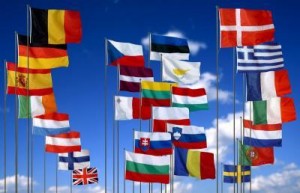 ‘Concerns for the future of the Russian dairy industry’, was one of the news headlines on AllAboutFeed last month. Prices of feed are still the main reason for the concerns and not only Russian dairy farmers experience these problems. But will Africa – with its potential for growth – take the place as one of the main dairy countries in the future?
‘Concerns for the future of the Russian dairy industry’, was one of the news headlines on AllAboutFeed last month. Prices of feed are still the main reason for the concerns and not only Russian dairy farmers experience these problems. But will Africa – with its potential for growth – take the place as one of the main dairy countries in the future?
Situation in Russia
The rising feed costs, as well as high interest rates on loans could significantly harm the milk production sector in Russia, according to the concerned chairman of the National Union of Milk Producers Andrei Danilenko. Russia is a large producer of milk (over 31.5 million tonnes in 2012). The US, India, Brazil and China are the ones that produce more than Russia. In terms of production costs for one litre of milk, Russia can in general compete with the EU, US, Canada and even China, according to the chairman. “However, last year we saw a 1.2 million tonne drop in domestic milk production, with the growth of imports by 2 million tonnes”, Danilenko explained.
Extreme heat and drought
The drop in Russia’s milk output is for a large extent due to the high raw material prices. And as we all know: Feed is the largest costs for dairy farmers. One of the main threats of instability for the dairy business is the price of feed, which is highly dependent on the results of harvest and weather conditions within a certain season. The weather in Russia in recent years remains rather unpredictable, which also negatively affects the investment attractiveness of the dairy industry. In 2010, Russia experienced extreme heat and its worse drought period ever. The drought laid waste to 9 million out of 48 million hectares of planted land and resulted in a temporally export ban for grains.Again in 2012, Russia lost 25% of its grain harvest to drought. Obviously this has an effect on the feed prices in Russia and hence production costs for milk. Also other countries experience high production costs. And also the United States has experienced some really drought seasons. In the Netherlands, drought is not so much a problem. But dairy farmers still had an average production cost of nearly 45 cents per litre in 2013. This is against the paid 37 cents per litre, as stated by the Dutch Dairy Board. So milk prices can be relatively good, the feed prices are still too high. This is because the raw materials market is a global one.
Can Africa milk more?
Regions such as China and India have had historically low costs, but are now seeing these costs increase over time. But what about Africa? Some see great potential for cattle in this continent. But when I think if Africa I think of what I said above – about drought and raw material supplies. But Africa is so versatile. Of course you have the dry parts, but the central region is luscious, with enough water supplies and potential for crop production. It sounds simple: dairy production seems the most profitable in areas where there is water and feed. But I am not sure if Africa is already to be a solid competitor on the global dairy market. I am not sure how the production costs way up to the price the farmers get. South Africa is already a big producer, with around 2.4 million tonnes litres of milk per year. Namibia produces 22 million litres per year. Kenya also has a big dairy market, but the scale and size of the farms can still be increased. Enough potential for the African dairy industry I would say.
Regarding the Russian news item, the chairman of the Russian national Union of Milk Producers also said that no new investments have been done in the Russian dairy industry lately. However, in Africa, China for example is investing heavily in agriculture (including dairy). I am curious to see what shifts the global dairy production takes in the next decades and whether certain countries are getting too expensive in terms of feed costs to even raise dairy cattle in the future.
Thanks to AllAboutFeed magazine and GDF website (www.dairyfarmer.net).

